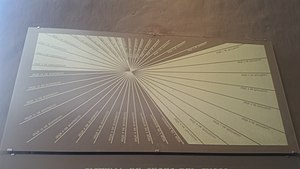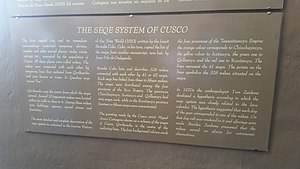

The siq'i (Spanish: Ceque; Quechua: A stripe, stroke, line indicating a direction.), Quechua pronunciation: [sɛq'ɛ]) system was a series of ritual pathways leading outward from Cusco into the rest of the Inca Empire.[1][2] The empire was divided into four sections called suyus. In fact, the local name for the empire was "Tawantinsuyu," meaning "four parts together." Cusco, the capital, was the center and meeting point of these four sections, which converged at Qurikancha, the temple of the sun. Cusco was split in half, Hanansaya to the north and Hurinsaya to the south, with each half containing two of the four suyus. Hanansaya contained Chinchaysuyu in the northwest and Antisuyu in the northeast while Hurinsaya contained Qullasuyu in the southeast and Kuntisuyu in the southwest.[3] Each region contained 9 lines, except for the Kuntisuyu, which had 14 or 15.[4] Thus a total of 41 or 42 known pathways radiated out from the Qurikancha or sun temple in Cusco, leading to shrines or wak'as of religious and ceremonial significance.[5]
